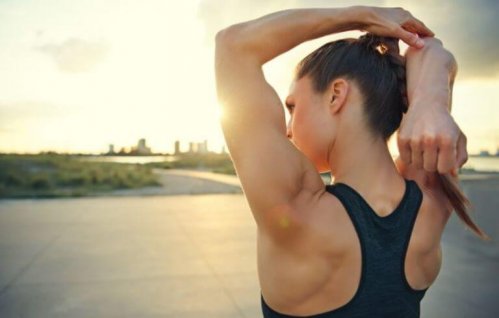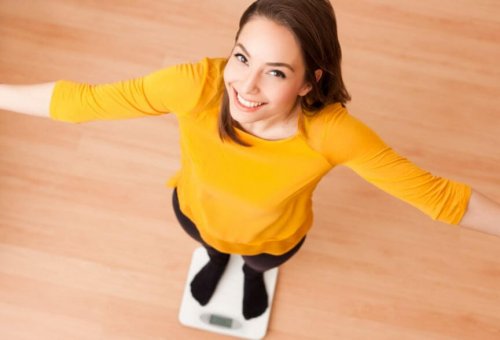Vibration Exercises: The New Workout Technique

Surely you’ve heard of vibration exercises as an innovative technique to exercise and stay fit? In this article, we’ll explain everything you should know about the vibratory platform and how it tones the body.
The first point you should know is that vibration exercises require machines. These are specially designed to vibrate at different frequencies. Additionally, these machines are considerably large and are similar to a treadmill.
Now, to talk about how it works we must consider that the machines transfer vibrations to the user’s body. Consequently, this vibration is the base of a complete exercise routine. However, you can also add this to your usual routine.
When muscles contract and relax in response to the vibrations they feel, the muscle fibers strengthen. Therefore, using this platform means that you can do a variety of exercises such as push-ups, planks, or jumps. However, we recommend breathing normally as you perform your vibration exercises.
Additionally, consider that the part of the body in direct contact with the machine and its position will determine which part of the body will be affected. In any case, to achieve your results, you must optimize the frequency, magnitude, and application of the stimuli.
A new training technique
Many trainers promote vibration exercises due to great benefits on the body. And so, these benefits range from muscle strength to aesthetic improvements, in a short time with little effort.
Among the most impressive advantages is that you can use this to warm up, cool down or even perform the core of the exercise. Therefore, with these, you can do Pilates, squats, planks, push-ups, etc.
Consider that when you’re using these platforms, the vibrations generate gravity and strength. Consequently, these are essential when acquiring strength and growing muscle fibers.

Vibration exercises allow cells to activate and causes muscular contractions. Thereby, helping you build muscle and tone without high impact exercises.
Therefore, you can add this technique to your regular exercises and stretches, such as yoga or weight lifting. In turn, vibration exercises will burn additional calories, fat and grow muscle mass.
Now, since you can do virtually any exercise with these platforms, there’s also a wide range of training methods that you can utilize. Moreover, you can use warm-up techniques and also more advanced muscle building techniques alike. Nonetheless, you must consider your physical condition and objectives to perform these exercises.
In fact, a study on these vibration machines suggests that it helps with long term weight loss and visceral fat. Furthermore, this investigation also confirms that it works wonders when combining it with other techniques. Thus, making a big difference on how to have more healthy habits.
Complete body vibration exercises
Body vibrational therapy is a type of passive exercise that forces the body to subconsciously respond to a stimulus. The user is not performing a regular activity here, such as walking or running.
Most of the vibratory platforms on the market have frequencies between 25 and 60 Hertz. The lower the frequency, the longer will the muscle contractions will be. On the other hand, lower frequencies are a great way to build muscle.

Finally, don’t forget that you can have fun, decrease effort, and receive the results you want. Therefore, if you’re looking to lose weight or gain muscle mass you could include vibration exercises to your routine.
Surely you’ve heard of vibration exercises as an innovative technique to exercise and stay fit? In this article, we’ll explain everything you should know about the vibratory platform and how it tones the body.
The first point you should know is that vibration exercises require machines. These are specially designed to vibrate at different frequencies. Additionally, these machines are considerably large and are similar to a treadmill.
Now, to talk about how it works we must consider that the machines transfer vibrations to the user’s body. Consequently, this vibration is the base of a complete exercise routine. However, you can also add this to your usual routine.
When muscles contract and relax in response to the vibrations they feel, the muscle fibers strengthen. Therefore, using this platform means that you can do a variety of exercises such as push-ups, planks, or jumps. However, we recommend breathing normally as you perform your vibration exercises.
Additionally, consider that the part of the body in direct contact with the machine and its position will determine which part of the body will be affected. In any case, to achieve your results, you must optimize the frequency, magnitude, and application of the stimuli.
A new training technique
Many trainers promote vibration exercises due to great benefits on the body. And so, these benefits range from muscle strength to aesthetic improvements, in a short time with little effort.
Among the most impressive advantages is that you can use this to warm up, cool down or even perform the core of the exercise. Therefore, with these, you can do Pilates, squats, planks, push-ups, etc.
Consider that when you’re using these platforms, the vibrations generate gravity and strength. Consequently, these are essential when acquiring strength and growing muscle fibers.

Vibration exercises allow cells to activate and causes muscular contractions. Thereby, helping you build muscle and tone without high impact exercises.
Therefore, you can add this technique to your regular exercises and stretches, such as yoga or weight lifting. In turn, vibration exercises will burn additional calories, fat and grow muscle mass.
Now, since you can do virtually any exercise with these platforms, there’s also a wide range of training methods that you can utilize. Moreover, you can use warm-up techniques and also more advanced muscle building techniques alike. Nonetheless, you must consider your physical condition and objectives to perform these exercises.
In fact, a study on these vibration machines suggests that it helps with long term weight loss and visceral fat. Furthermore, this investigation also confirms that it works wonders when combining it with other techniques. Thus, making a big difference on how to have more healthy habits.
Complete body vibration exercises
Body vibrational therapy is a type of passive exercise that forces the body to subconsciously respond to a stimulus. The user is not performing a regular activity here, such as walking or running.
Most of the vibratory platforms on the market have frequencies between 25 and 60 Hertz. The lower the frequency, the longer will the muscle contractions will be. On the other hand, lower frequencies are a great way to build muscle.

Finally, don’t forget that you can have fun, decrease effort, and receive the results you want. Therefore, if you’re looking to lose weight or gain muscle mass you could include vibration exercises to your routine.
All cited sources were thoroughly reviewed by our team to ensure their quality, reliability, currency, and validity. The bibliography of this article was considered reliable and of academic or scientific accuracy.
- Hand, J., Verscheure, S., & Osternig, L. (2009). A comparison of whole-body vibration and resistance training on total work in the rotator cuff. Journal of Athletic Training, 44(5), 469–474. https://doi.org/10.4085/1062-6050-44.5.469
- Bosco, C., Iacovelli, M., Tsarpela, O., Cardinale, M., Bonifazi, M., Tihanyi, J., … Viru, A. (2000). Hormonal responses to whole-body vibration in men. European Journal of Applied Physiology, 81(6), 449–454. https://doi.org/10.1007/s004210050067
- Kerschan-Schindl, K., Grampp, S., Henk, C., Resch, H., Preisinger, E., Fialka-Moser, V., & Imhof, H. (2001). Whole-body vibration exercise leads to alterations in muscle blood volume. Clinical Physiology, 21(3), 377–382. https://doi.org/10.1046/j.1365-2281.2001.00335.x
- Bosco, C., Colli, R., Introini, E., Cardinale, M., Tsarpela, O., Madella, A., … Viru, A. (1999). Adaptive responses of human skeletal muscle to vibration exposure. Clinical Physiology, 19(2), 183–187. https://doi.org/10.1046/j.1365-2281.1999.00155.x
This text is provided for informational purposes only and does not replace consultation with a professional. If in doubt, consult your specialist.








